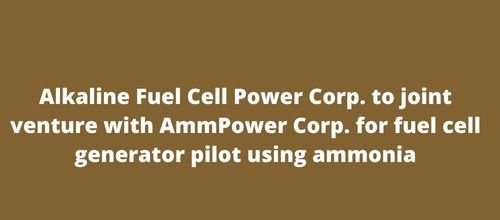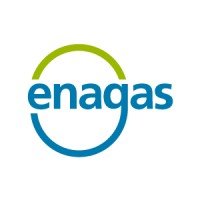Alkaline Fuel Cell Power Corp. to joint venture with AmmPower Corp. for fuel cell generator pilot using ammonia

Alkaline Fuel Cell Power Corp., a diversified investment platform developing affordable, renewable, and reliable energy assets and cleantech, is pleased to announce that on November 3rd, 2022, the Company executed a non-binding letter of intent (the “LOI”) with AmmPower Corp. (“AmmPower”), a company developing technology to convert green ammonia into green hydrogen.
The LOI summarizes the intentions of the Company and AmmPower entering into a joint venture (the ”JV”) for the development of a pilot project testing PWWR’s off-grid fuel cell generator and AmmPower’s ammonia cracking technology (the “Pilot”).
“Given North America is years away from being able to deliver free-flowing hydrogen to customers, PWWR is doing everything we can to demonstrate more immediate alternatives designed to accelerate the sale of fuel cells to business and home owners,” commented Frank Carnevale, CEO of Alkaline Fuel Cell Power. “This is why I am so excited to partner with AmmPower as we aim to successfully demonstrate that green ammonia is an energy carrier that can bring clean ’Power to the People’ today. The AmmPower technology is converting green ammonia back into hydrogen and when combined with PWWR’s robust alkaline fuel cell technology, represents a great potential solution to deliver affordable, renewable and reliable electricity to customers who deserve better options than what exists today.”
AmmPower’s CEO, Dr. Gary Benninger, states, “AmmPower is pleased to enter in a Joint Venture with PWWR to take advantage of the numerous opportunities in the alternative energy space. The AmmPower team has leading cracking technology that complements PWWR fuel cell innovations, and we look forward to working with the PWWR team on solving the world’s energy needs.”
AmmPower is focused on developing technology to convert green ammonia into green hydrogen, a process called ammonia “cracking”. With this cracking technology, hydrogen can be safely stored and transported around the world as ammonia, and upon arrival at its destination, be converted back into hydrogen for a cleaner and more efficient end-use. PWWR is developing low-cost hydrogen fuel cell systems for global markets, which can convert hydrogen into electricity with zero CO2 emissions.
The goal of the JV is to showcase the market opportunities and ultimate value potential of advancing such ammonia-to-power technology for off-grid and back-up electricity across North America. Specifically, the Pilot is designed to demonstrate the ability to convert green ammonia to hydrogen using AmmPower’s ammonia cracking technology and then convert that hydrogen into clean energy using PWWR’s 4kW fuel cell generator system. The ammonia-to-power unit will be a completely carbon-free process for electricity generation.
Both PWWR and AmmPower will work together over the coming months to identify suitable sites and partners for the execution of the JV. PWWR has already identified and begun discussions with a number of targets to demonstrate the combined technology’s ability to deliver affordable, renewable and reliable power in support of their operations and requirements.
The obligations of the parties will be subject to customary conditions after satisfactory completion of due diligence, including the board of directors of each party approving the proposed transaction and the parties’ execution of a definitive agreement.
PWWR’s Alkaline Fuel Cell technology offers a more cost-effective solution, especially when the available hydrogen is not at ultra pure PEM (proton-exchange membrane) fuel cell grade specification. Due to this introduction of robust alkaline technology, the typical purification steps used by industry peers to upgrade the hydrogen are no longer required.
This alkaline fuel cell can be operated with hydrogen that contains up to 3000 parts per million (“ppm”) of ammonia, thus reducing the costs for hydrogen purification after the conversion.
One cubic metre (“m3”) of liquid ammonia contains 119 kg of hydrogen. In comparison, compressed hydrogen at 300 bar(g) of pressure has 22kg/m3 and liquid hydrogen at -253°C has 71kg/m3. To put this into perspective, one small 1 m3 tank of ammonia at 10 bar(g) of pressure and at ambient temperature contains five and a half times more hydrogen than 20 cylinders of compressed hydrogen at 300 bar(g) of pressure.
The emphasis on availability of green hydrogen is a necessary catalyst to kick-start the value chain underpinning a true hydrogen economy. AmmPower’s green ammonia technology can accelerate the availability of hydrogen, enabling production at locations where renewable infrastructure is already available can transporting to locations where hydrogen is required to serve as a green, zero-emission fuel.
